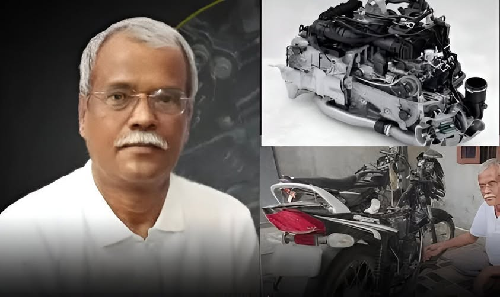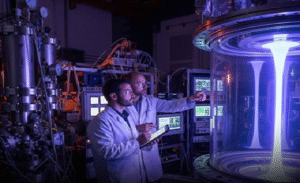After two decades of relentless research and personal sacrifice, inventor Shailendra Gaur from Prayagraj, UP, has unveiled a groundbreaking six-stroke internal combustion engine that could completely redefine the future of the automotive industry in India.
Gaur, an alumnus of Allahabad University, claims his patented technology delivers a sensational 176 to over 200 kilometers per litre (KMPL) mileage and significantly reduces pollution, with reports suggesting near-zero emissions.
The core of Gaur’s invention lies in its unique six-stroke design, which drastically increases thermal efficiency—the ability to convert fuel energy into power. Unlike conventional four-stroke engines, which typically utilize only about 30% of the fuel’s energy, Gaur’s engine reportedly achieves an efficiency of up to 70% by adding extra expansion and exhaust strokes.
Key claims of the new engine:
- Unprecedented Mileage: Test results on a modified 100cc TVS motorcycle showed a mileage of 176 KMPL in a controlled environment, with the inventor aiming for 200 KMPL in its final form.
- Multi-Fuel Capability: The engine is designed to run seamlessly on multiple fuels, including petrol, diesel, CNG, and ethanol, offering remarkable flexibility to consumers.
- Near-Zero Emissions: By maximizing fuel efficiency, the engine significantly cuts down on harmful byproducts, aligning with, and possibly surpassing, strict modern emission standards.
The development has been a passion project for Gaur since the early 2000s. Media reports indicate that the inventor sold his land, house, and shop to fund his research, turning his rented home into a makeshift laboratory. His perseverance has resulted in the technology receiving two patents from the Government of India, with more patents currently pending.
If successfully commercialized, the implications of this breakthrough are colossal. Industry analysts suggest that a vehicle delivering 200 KMPL mileage could single-handedly collapse the existing market structure, valued at several lakh crores of rupees in India alone, spanning:
- Automobile Manufacturing: Existing low-mileage engine platforms for bikes and small cars would become instantly obsolete.
- Petroleum Sector: A dramatic reduction in fuel consumption per vehicle could cause a significant dip in demand for petrol and diesel, impacting the entire refining and distribution trio.
- Electric Vehicle (EV) Segment: While the EV transition is underway, a fossil-fuel engine with near-zero pollution and 200 KMPL efficiency would present an immediate and cost-effective alternative, slowing EV adoption in the two-wheeler market.
Mr. Gaur is now reportedly seeking support from the government and major automobile manufacturers to scale up the technology from a prototype to mass production, a crucial step to bring this potential world-changing innovation to the common public.







